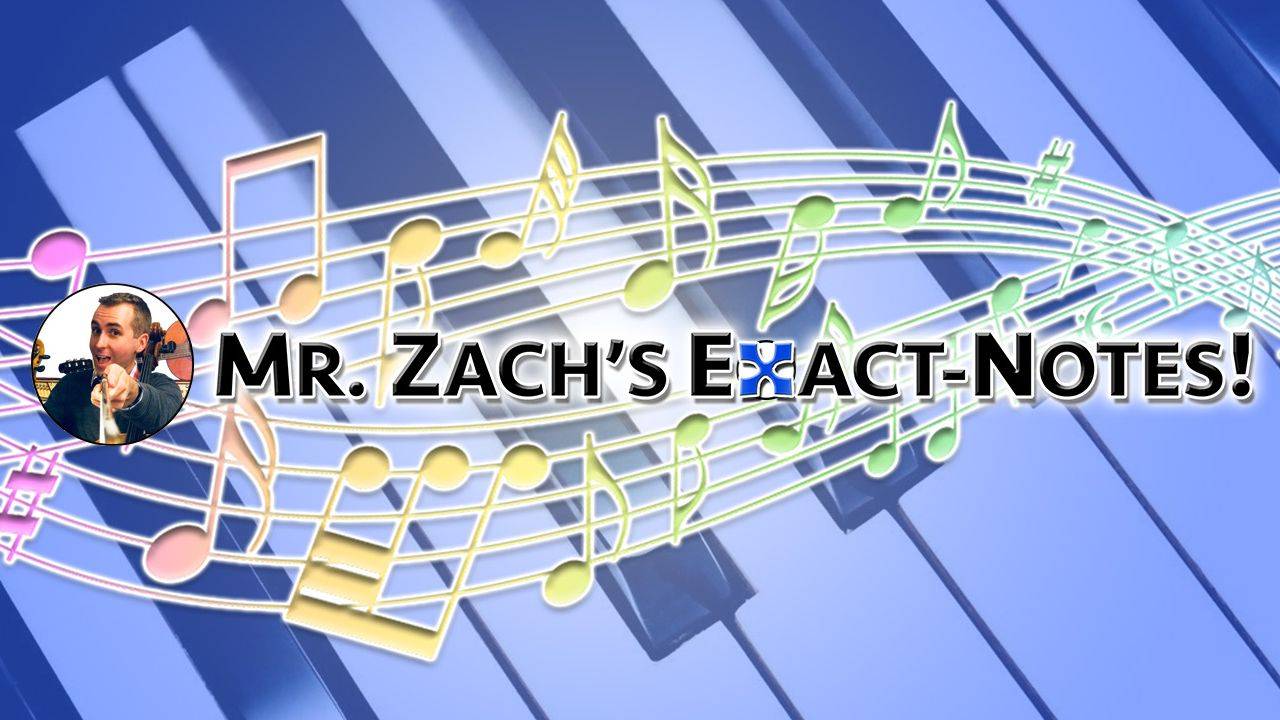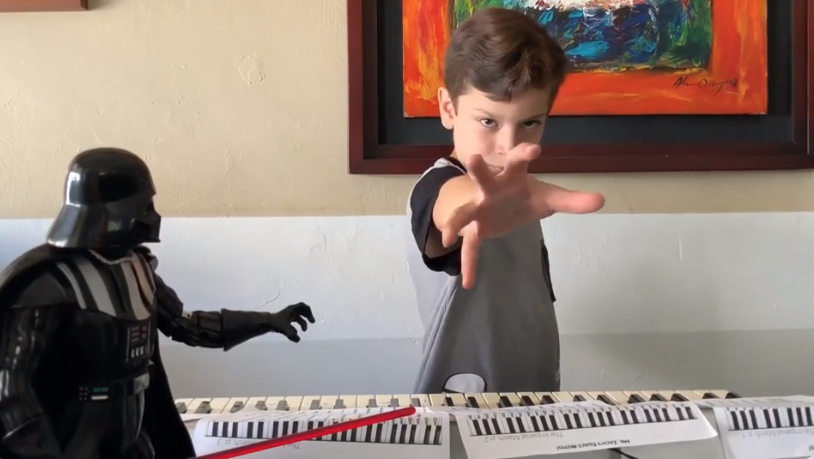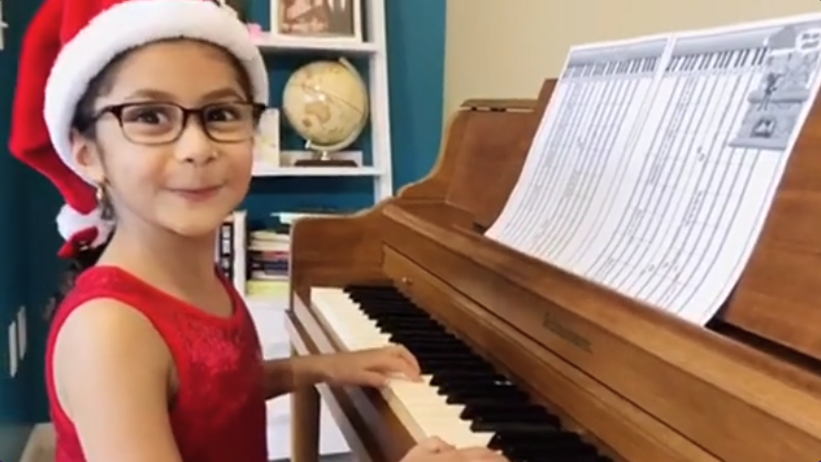Problem SOLVED: Bloom's 2-Sigma Problem
From Wikipedia:
"Bloom's 2 sigma problem refers to the educational phenomenon that the average student tutored one-to-one using mastery learning techniques performed two standard deviations better than students educated in a classroom environment...
"The phenomenon's associated problem, as described by Bloom, was to 'find methods of group instruction as effective as one-to-one tutoring.'"
In other words, when a student is tutored "one-to-one using mastery learning techniques," the average "D" student becomes a "B" student, and the average "C" student becomes an "A" student.
(Note from the the original study: "one-to-one tutoring" was small groups of 3-5 students.)
When I originally encountered this problem, I had been researching the methods used to teach child prodigies like Mozart and Beethoven. What struck me about the "2 sigma" improvement, or the move up 2 letter grades, was that examples like Mozart would have been off the charts in terms of progress above their peers - lite...
2 Pitfalls to Avoid for New Learners!
If you want your child to have the best learning experience, you need to know that there are two things that friends and family often do that accidentally confuse and frustrate the student's learning!
Avoid these two pitfalls and you'll have a more successful start!
Pitfall #1. "Echoing"
Imagine your child was having a lesson with a private teacher where a parent is sitting behind the student, repeating the teacher's instructions...
It may sound silly, but this is often exactly what happens when kids are learning from a video!
The problem is, parent's have one of the most powerful voices in their child's mind... so when this happens, any well-disciplined child shifts their focus away from the teacher, choosing instead to prioritize their parent.
While this is usually a good thing, in this case, it gets in the way of them becoming strong, confident, independent learners.
The solution is easy! First, just let the lesson do the teaching by not repeating instructions, and if they ...
How to Get Your Kids to Self-Start their Practice
What if your kids practiced on their own each day, without being asked or reminded?
Let me show you how! Follow these steps - and make sure to follow them all!
Step #1. Make it DAILY
Everyone says this... but why? Because if it’s not every day, it’s hard for kids to remember which days are “on” or “off.” (And without Step #1, there can be no Step #5. Keep going!)
Step #2. Choose a Specific Practice Deadline
Habit formation experts call this step "intention setting." Basically, that means pre-determining when, where, and how practice happens. That's fine for regular practice routines where parents usually do the work of keeping every child on-task for every task... But to make it self-initiating practice, you have to reverse the stakes by become the "Fail-Safe" rather than "Order Barker." Here's how:
In this step, you’ll set an alarm to go off each day at the latest time you consider reasonable for practice. This is wh...
How to Get Kids to Self-Evaluate Their Progress for More Effective Practice | The 5 Dimensions of Learning Music: A Self-Assessment Tool for Students
I often joke with my students that my job as a teacher is to listen to what they play, and then tell them "Good... Now do it better." That's pretty comically pointless feedback and instruction, right?
Well, yes and no. Yes, it's "pointless" because it's not very specific. But no, it's not pointless because it puts the burden of thinking where it's most appropriate: in the mind of the student.
Because:
The brain that does the thinking, does the learning.
If my job as a teacher is merely to point out specifics in need of improvement, then the student stops growing as soon as the teacher is away. That's not a great cycle.
Instead, I see my role as to encourage and nurture the student's personal drive for achievement. If their progress is limited to our time together, their progress would be very limited, indeed. That's why, more than feedback for specific improvements, students benefit most from a framework for self-assessment.
That's what "The 5 Dimensions" are - a framework I use ...
BEST Ways to Label Your Piano Keys 🎹

1-Minute Read
Labeling your piano keys is quick and easy!
We only use the letters "A B C D E F G" and you just have to find the pattern of "2 black keys" and "3 black keys."
It's easiest to use a dry-erase marker, but make sure to write the letters at the TOP of each key where they can be seen but won't get rubbed off.

If you're feeling artsy-craftsy, check out this video I made on slightly more FUN and CREATIVE ways to make your own labels!
Best wishes,
Mr. Zach
P.S. It was a HOT summer night when I made this video... Sorry that I look sweaty! I was!
Click here for the labels I use on my keyboard
Sign up to get the newest articles from my Kids Piano blog!
3 Keys to Give Your Kids a GREAT Start to Music!

3 Keys to Give Your Kids a GREAT Start to Music
And KEEP it Great Long After Starting!
When learning music, three aspects matter most. If you miss BIG on any one, kids get frustrated and want to quit… But do well on all 3, and you’ll be off to a better-than-average start! Use this as a start-up guide to music with your kids, AND save it for future reference to review the most important aspects in case things start to go bad sometime down the road!
Let's get started!
Key 1: Getting Started…
Some kids start off begging to learn! If that’s NOT your kid, here’s how to successfully invite them to give it a try:
- Call it “playing songs,” NOT “learning piano.” Kids like “playing” and they like “songs,” so phrasing it like this is speaking their language! (“Learning” might not be their favorite activity… and “piano” is unknown until they’ve tried it!)
- Mention the Benefits of Music!* Competitive personalities like to know that kids who learn an instrument score higher on math and...
7 Rules for Helping Young Beginners Learn to Play Piano (or any Musical Instrument)
Hello, parents and teachers! In this article, I'll share my 7 rules on how to successfully help young children learn to play piano (or any other musical instrument).
In each rule, I'll give a pretty thorough explanation on one specific point so that by the end, you'll understand it from an important new perspective: the child's.
When a rule is expressed in the negative (for example, saying what NOT to do), it will always be followed with what TO DO instead.
Finally, at the heart of each rule, there's an important Core Principle which I'll make sure to emphasize so that the spirit of the rule is clear enough to apply elsewhere.
Ready to start? Let's dive in!
🎵 Sign up to get the newest articles from my Kids Piano blog! 🎵
Rule #1. Don't Touch the Keys!
The principle behind Rule #1 is "The brain that does the THINKING does the LEARNING." (Write this one down!)
When a child is trying to play a song, there's a long chain of events that must happen to play a single note, and adults p...
5 Steps for a Most Memorable Recital Video!

A great recital video is a worthwhile investment you'll enjoy the rest of your life! Here are my top tips for how to make a video you and your child will be proud to share and remember forever!
Click here to download the Checklist
1. Make a Great Introduction:
- Get dressed up! Fun costumes and/or formalwear, depending on YOUR style. Santa hats, props, related toys, and decorations add LOTS of fun!


- Introduce your name, age, grade, and the piece they're playing
- Encourage your student to speak up with a slow, clear, confident voice,
- Include anything special they'd like the audience to know or notice about THEIR performance of the piece! (Special sound choices, modifications to the original melody, or things to inspire the listener to imagine while listening, etc.!)
- A recital is also a snapshot in time: Let your teacher and audience know specific things you worked extra hard on, or are hoping to achieve at this performance, like playing without mistakes, playing smoothly, ...
Mr. Bock the Chicken's Cello Progress Video (on Determination!)

Learning something new has it's risks and rewards... and the RISKS are very real, and very important! When we set out to learn something, we risk how we see ourself... it's vulnerable and frustrating even in the best of times.
THANKFULLY Mr. Bock here was willing to document his progress - especially his early failed attempts - so we could all see what it looks like to hit obstacles and persevere.
One of the things I like the MOST about the arts is that they are one of the safest contexts to get practice encountering and overcoming challenges. I don't know of any better medium than the arts for kids to get regular practice preparing for life's more important and consequential challenges.
I'll let Mr. Böck take it from here!
🎵 Sign up to get the newest articles from my Kids Piano blog! 🎵
What are the Top 5 BEST Instruments for Pre-K and Elementary Kids? (on Playful Beginnings!)

Have you ever wondered what instruments are best to get kids started in music?
My Teddy! Inspire Kids! workshop shows you five GREAT starter instruments up-close that help our kids earn personal fulfillment while working hard and having fun!
While you're watching, pay close attention to when your kids either PERK UP, or GET BORED... Which do they seem to like MOST?
Ready? Let's explore the PIANO, a surprising relationship between the UKULELE and VIOLIN, and another surprising relationship between GUITAR and CELLO!



